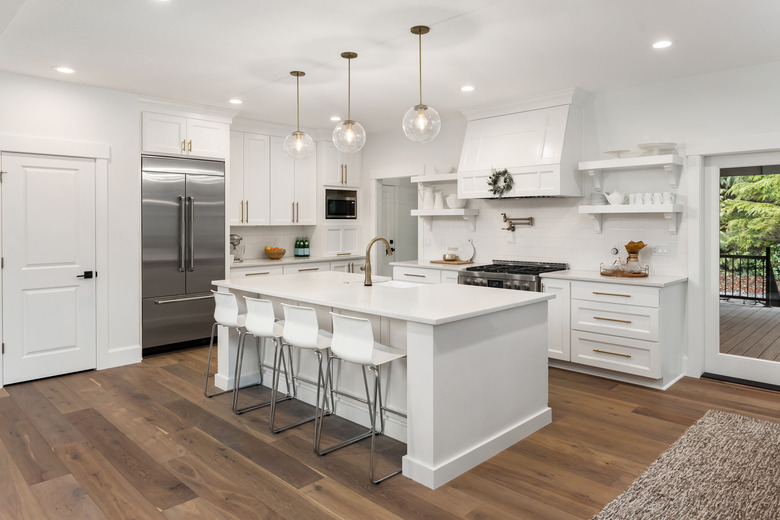Leveling A Refrigerator On An Uneven Floor
Is your refrigerator looking a little slanted? An uneven floor can make your refrigerator sit at an angle, which can affect how it operates. Leveling a refrigerator using the built-in adjusting mechanisms gets everything back in line to keep your appliance running smoothly. Whether your Samsung refrigerator leans back, your GE refrigerator wheels are uneven or your Whirlpool fridge is lopsided, simple adjustments can take care of the problem.
Why Leveling a Refrigerator Matters
Other than looking a little crooked, does it really matter if your refrigerator isn't level? It might not seem like a big deal, but keeping your appliances level helps them run properly. That may make them last longer by putting less stress on the mechanical parts.
An obvious issue with a refrigerator being uneven is a problem with the doors. For the doors to properly align, the refrigerator needs to be level. It also helps the doors stay closed and seal properly, which is important for keeping the refrigerator temperature consistent and preventing cold air leakage. A fridge that's out of level might have frost or moisture issues. Uneven placement can also cause vibrations in the appliance.
Remove the Refrigerator Grille
You might need to remove the refrigerator grille to access the leveling mechanism at the front of your fridge. The grille is located at the front near the floor just under the door. Grilles usually have clips for quick release or screws to release them. Check in your refrigerator owner's manual if you're not sure how to remove the grille.
Models With Adjustable Rollers
Refrigerators with adjustable rollers typically have screws near the top of the rollers. The screws are how you adjust the height. Grab a screwdriver to change the height of each of the two front rollers. For most models, you'll turn the screw clockwise to tighten it and raise the refrigerator, as instructed by GE Appliances. If you need to lower the fridge, turn the screw counterclockwise to loosen it. This can vary, so it's best to look in your manual.
Models With Adjustable Legs
Other refrigerators sit on adjustable legs with a threaded design. You can rotate the legs by sliding a flat-head screwdriver into a groove on the leg and using it as a lever to turn it. When you rotate the legs, the threads adjust that side of the refrigerator up or down. For most fridges, you'll turn the legs clockwise to move it up or counterclockwise to move it down. Test it out on your fridge or read the manual to verify the correct direction.
Check the Level
Once you're done leveling a refrigerator, check the fridge to make sure it's correct. It might look even but still lean slightly to one side or lean more to the front or back. One simple test is to open the fridge door just a little bit and let go. If the door closes on its own gently, the alignment is likely accurate. If not, make a few more adjustments. If it slams shut, you likely have the front too high. A door that swings open shows that the front is too low.
You can also use a carpenter's level for a quick, accurate check. You'll want to check the fridge from side to side and front to back. It should be perfectly level from left to right for proper operation. A slight angle from front to back, with the front slightly higher than the back, is fine. The gentle angle, with the front roughly 1/4 to 1/2 inch higher than the back, helps the door close properly on its own.
